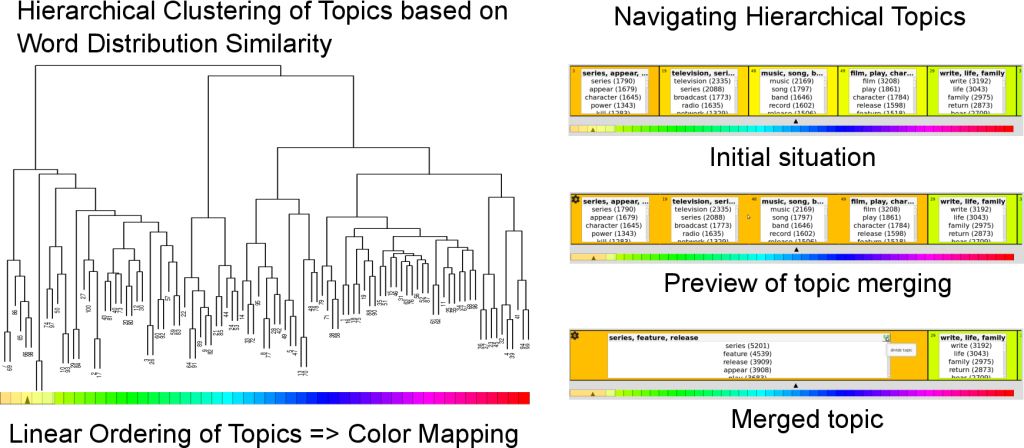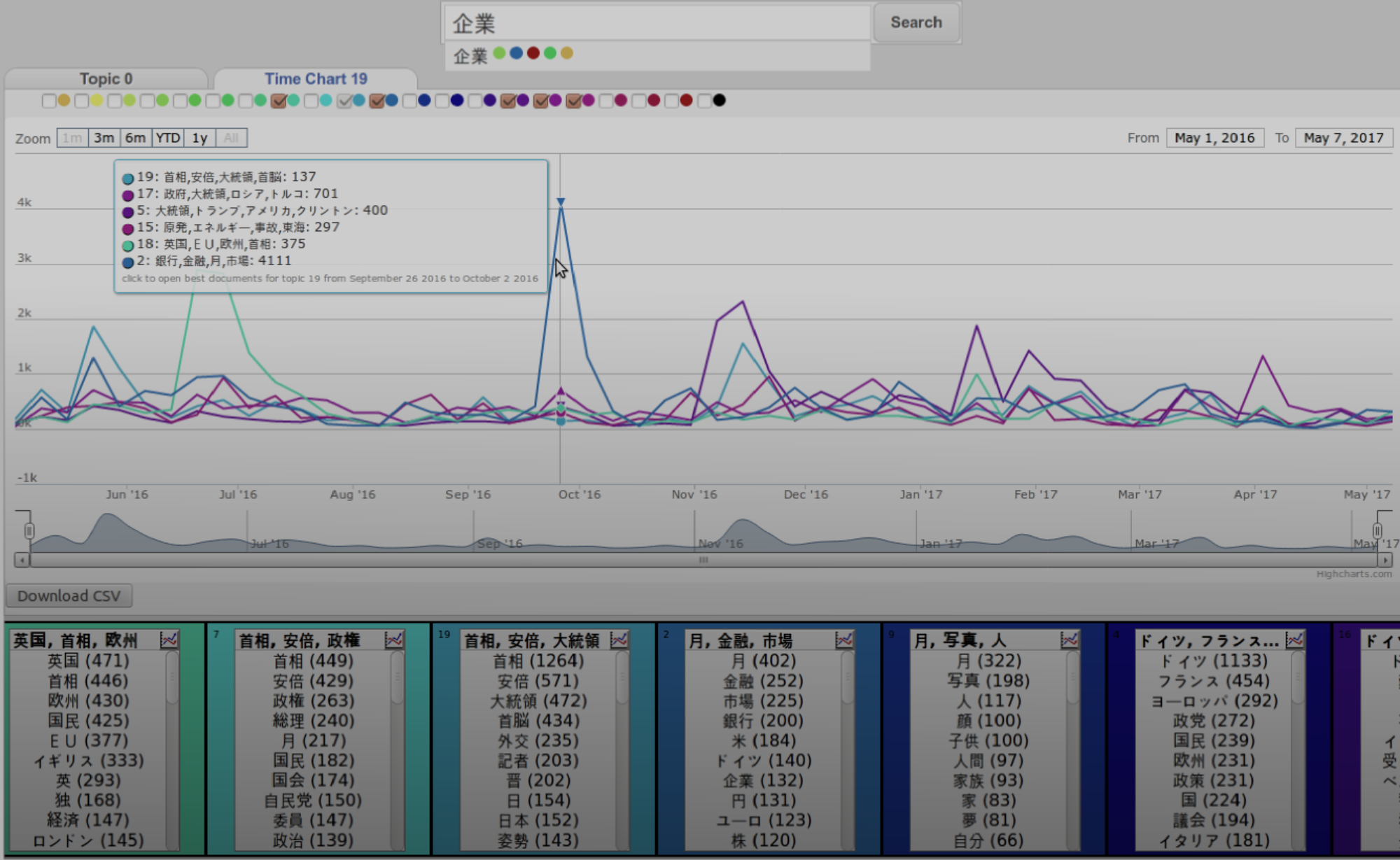TopicExplorer helps users to explore the semantics of the learned topics with several visual and interactive features.
Topic Ordering and Color Mapping (since version 1.0): To browse the whole topic spectrum from left to right without semantic interruptions, the topics are linearly ordered by word-based similarity. Thus similar topics are close together, e.g., given a general collection of Wikipedia pages, the four left most topics are all about different kinds of entertainment. Mapping the topic ordering to a continuous color chart, e.g. rainbow, turns colors into a kind of visual hash function. After browsing the topics, a user might remember that yellowish colors correspond to entertainment topics.

Topic-based Document Ranking (since version 1.0): A document ranking with respect to a topic are opened by clicking on the topics header, e.g. see the first part of the ranking for the music topic (topic 48). The colored circles indicate the four most relevant topics in the respective document.

Document View with Topic Assignments of Words (since version 1.0): Clicking on a document opens a detailed view that shows to word assignments to the topics by colored underlines. As frequent and rare words as well as those with certain part-of-speech tags are excluded from the topic model analysis, not all words have a topic assignment.

Auto-Completion of Search Terms with relevant Topics (since version 1.0): A word can be used in different contexts. Those are revealed by auto-completion, which shows all topics relevant for a given word, e.g. traditional is part of many topics among those is the topic music (Topic 48).

Temporal Topic Evolution (since version 1.1): In case documents have time stamps, e.g. blog-posts, the temporal evolution of the topics can be visualized. The example shows different reactions to the Cesium contaminated beef scandal in July 2011 following the Fukushima accident described in Japanese blogs. Different reactions are categorized by the topics. The plot shows their temporal unfolding.

Hierarchical Topic merging and splitting (since version 1.2): Different levels of topical granularity are often required during text analysis. Therefore, topics can be interactively merged and split, while the rest of the views adapt to the chosen granularity. Thus, the topic hierarchy, which was already used to determine the linear topic ordering, can be interactively navigated.

Further features:
- Topic-based Keyword search (since version 1.1)
- Filter Topic Word Representations by Part-Of-Speech-Tags (since version 1.1)
- Topic-Frames (since version 1.1)
- Multiple Keyword Search (since version 1.3)
- Filtering Search Results (since version 1.3)
This blog, we discuss features and applications of TopicExplorer in particular as well as topic models in general. Furthermore, we present use cases of topic model applications to text and content analysis and discuss various heuristic strategies to make topic models useful.
We thank our sponsors for their generous support:
- Klaus-Tschira-Foundation
- Haniel-Foundation
